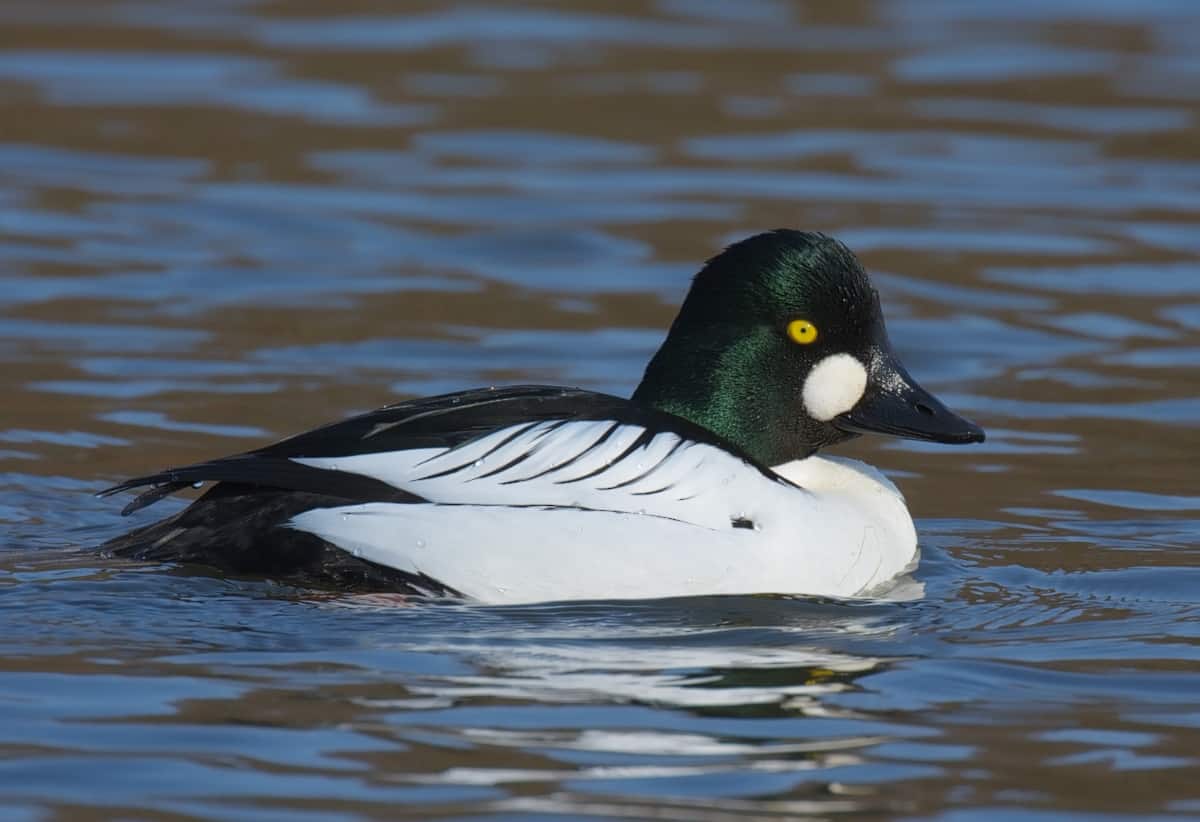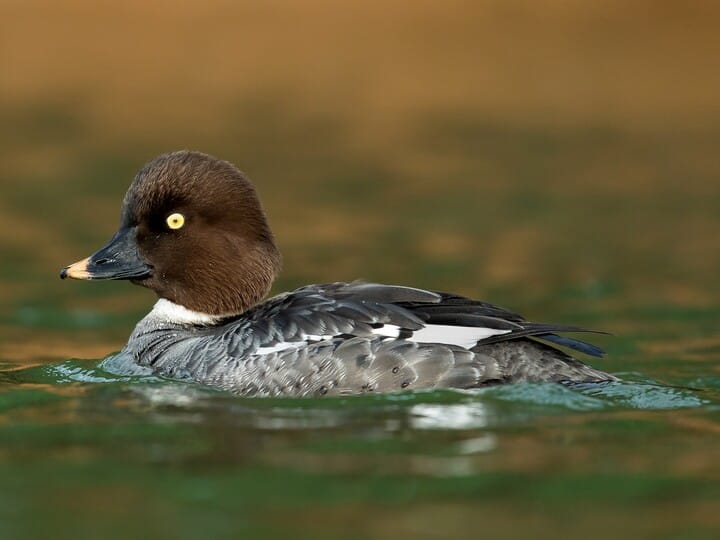Common Goldeneye


Scientific name: Bucephala clangula
Alternative names: Goldeneye, Common Golden-eye Duck
Measurements
| Feature | Male | Female |
|---|---|---|
| Length | 45–51 cm (18–20 in) | 40–50 cm (16–20 in) |
| Weight | ~1,000 g (2.2 lb) | ~800 g (1.8 lb) |
| Wingspan | 77–83 cm (30.5–32.5 in) | 77–83 cm (30.5–32.5 in) |
Status
Listed as Least Concern by the IUCN, the Common Goldeneye is a widespread and stable species found across northern regions.
Identification
A medium-sized diving duck easily recognized by its bright golden-yellow eyes and compact build. Males have a glossy dark green head with a small white patch near the bill, black back, and white underparts. Females are more subdued, with chocolate-brown heads and grayish bodies. Both have orange-yellow legs and produce a characteristic whistling sound with their wings in flight.
Voice
Mostly silent but known for the distinct wing-whistle heard during flight, which often gives away their presence before they’re seen.
Diet
Feeds by diving for crustaceans, aquatic insects, mollusks, and small fish. During breeding, insects dominate the diet, while in winter, they rely more on crustaceans and aquatic plants.
Distribution
Breeds throughout the boreal forests of North America, northern Europe, and Asia. North American populations nest mainly in Canada and Alaska, migrating south to the U.S. during winter.
Habitat
Prefers clear freshwater lakes, rivers, and forest ponds for breeding. In winter, they inhabit sheltered coastal bays or large inland waters that stay unfrozen.
Breeding
Nests in tree cavities or artificial nest boxes close to water, often using old woodpecker holes. Females lay 6–11 eggs and handle incubation alone for about 28–32 days. Ducklings leave the nest within a day of hatching, often making remarkable leaps from tree cavities to reach the water below.
Wintering
Migrates to temperate regions in winter, forming small flocks in open water bodies. Commonly found diving alongside other sea ducks in protected bays, estuaries, and large lakes.
